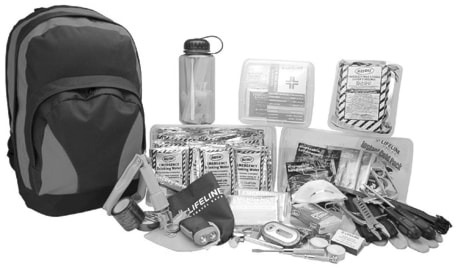TORONTO — As confirmed cases of swine flu continue to rise, officials are hammering home the importance of proper hygiene to help stem the spread of the disease.
But aside from rigorous handwashing and covering coughs and sneezes, how well equipped are individuals to cope with the potential ripple effects of an outbreak which could affect the ability to go to work or school or access outside resources?
It’s a hypothetical scenario here that has become reality in Mexico, the epicentre of the swine flu outbreak, where the government ordered the closure of schools across the country Monday.
A South Carolina private school was also closed Monday because of fears that young people returning from the Latin American country might have been infected.
Cases began cropping up in Canada on the weekend, and all of them have been described as mild so far.
However, public health and emergency management officials say taking precautionary measures for a potential worst-case scenario of limited or no access to vital resources should be front of mind in emergency preparedness.
Dr. Richard Besser, acting director of the U.S. Centers for Disease Control, said they expect people to start thinking about their own general preparedness, in addition to what they would do if there was a pandemic.
“It’s also time for people to be thinking about, ‘Well, what would I do if my child’s school were closed? What would I do for child care? Would I be able to work from home?”’ he said at a news conference in Atlanta on Monday.
“It’s time to think about that so that you’re ready in the event that there were a case in your child’s school. It’s time for businesses to review their plans and think about ‘What would I do if some of my workers couldn’t come to work? How would my business function?”’
On its emergency planning advice website, getprepared.ca, Public Safety and Emergency Preparedness Canada recommends individuals be ready to be self-sufficient for at least 72 hours in the event of an emergency.
Many items needed for an emergency kit — like a flashlight, battery-operated radio, non-perishable food, water and blankets — are already found in most people’s homes, and should be organized in a readily-accessible, easy-to-transport manner, in a suitcase or backpack. Additional suggested items include a small fuel-operated stove and fuel, a first aid kit and two additional litres of water per person a day for cooking and cleaning, as well as cash in the form of small bills, traveller’s cheques and change for payphones.
Emergency kits are available for purchase through the Canadian Red Cross, St. John Ambulance and the Salvation Army. It’s also recommended that families have a personalized emergency plan including safe exits from their homes and neighbourhoods, meeting places to reunite with family or roommates, health information and identifying risks in their areas.
U.S. government website PandemicFlu.gov recommends preparing for the possibility of disruptions to services provided by hospitals, banks, stores and restaurants, and to consider care for those with special needs in case the services they rely on are not available.
To coincide with the upcoming Emergency Preparedness Week, Public Safety Minister Peter Van Loan said the government will again run its “72 Hour” campaign encouraging families to assemble emergency kits and develop emergency plans.
“We know there’s still a lot of Canadians who decide, ‘Oh, that will never happen to me, so I don’t need to worry about it,”’ he said.
“Once a disaster or emergency takes place, that’s too late to start your planning. You have to have it planned in advance, and the better prepared you are, the easier it is for you to weather that storm.”
While emergency preparedness measures are more focused on natural disasters, many of the same principles can be applied to other types of emergencies, Van Loan said. In the aftermath of high-profile cases like the SARS outbreak in Toronto in 2003, there is more awareness of emergency preparedness than there was in the past, said Dr. David McKeown, medical officer of health for Toronto.
McKeown said it makes sense for those susceptible to severe flu, like the young and elderly, to take added precautions to avoid exposure to illness, in addition to immunization and proper hygiene. But at this stage, they’re not recommending the need for masks or gloves.
“The situation may evolve; it’s difficult to tell at this early stage where this outbreak is going,” he said. “That’s why I suggest that people listen carefully for updated messages and advice from public health authorities.”
Families with a live-in elderly relative or a child with special needs will also need to advance their level of preparedness, said Collin Lloyd, executive director of the Alberta Emergency Management Agency.
Lloyd recommends having extra medication, medical notes and prescriptions as part of the kit, which he describes as “essentials of survival.”
